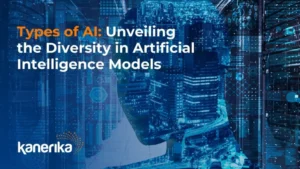What is Model Training?
Model training is a crucial step in the machine learning process, where a machine learning algorithm is fed training data from which it can learn. This entails creating a mathematical representation that connects data features to target characteristics. This is used to generate predictions on new data.
Model training is important to develop robust and dependable AI systems. It is a process that enables the model to learn from what we have given it, as well as adapt to new trends and patterns.
Basics for Model Training
1. What does the term “Model” mean in Machine Learning?
A model in machine learning is a mathematical representation used for making predictions. It’s software that scans through new datasets and discovers trends or develops solutions based on previous knowledge.
2. What is Training?
It is a process of teaching the model using data. This involves feeding the model with a dataset and allowing it to learn from it.
3. Why Train?
The more you train your model, the better it becomes at predicting things accurately and performing better than before.
Steps in the Model Training Process
- Data Collection: This step involves getting enough information needed by the system so that it can be trained on this information; otherwise, one might have too much unorganized information.
- Data Preprocessing: Data Preprocessing constitutes cleaning and preparing data so it can be fit for training purposes within a program. It involves dealing with missing values, normalizing data and making sure they are ready for modeling procedures.
- Choosing Models: It’s important to choose the best models because you’re going to train them relatively often. There are numerous types of such models including linear regression, decision trees, neural networks, each with its own strengths and weaknesses.
- Training Model: This is when you feed it with your prepared data, allowing it to learn from that dataset. The parameters are adjusted by identifying patterns or relationships in data, respectively.
- Evaluation and Validation: This includes evaluating how well the trained model does using various metrics such as accuracy, precision, recall, etc. This also enables improvement in areas where it is needed.
Key concepts
- Overfitting Versus Underfitting: Overfitting is when a model is so complex that it fits too tightly to the training data and performs poorly on new data. On the other hand, underfitting refers to a condition whereby a simple model fails to capture any underlying patterns in train/test datasets resulting in poor performance both at training phase and any future time.
- Training Data vs Test Data: While test data assesses how well the model has been trained, training data helps one learn more about how their program works. Splitting this into two groups assures no over- or under-fitting of models.
- Hyperparameters Tuning: Hyperparameters are various factors set before the system begins to train, such as things affecting learning speed. If one wants to get the optimal performance out of the models, these hyperparameters need to be adjusted.
Challenges Faced During Model Training
- Data Quality: The model can suffer a lot if it gets poor quality data. It is important to ensure that the data is correct, complete and relevant to the issue being addressed.
- Computation Resources: Model training needs a lot of computational resources, including powerful hardware and computing power. Such resources may impact how effective and efficient the process can be.
- Bias and Fairness: Model training can be susceptible to bias and unfairness if the data used is biased or if the model is not designed to be fair. It is essential to ensure that the model is designed to be fair and unbiased.
Tools and Frameworks
- TensorFlow: TensorFlow is open-source software which serves as a basis for numerical computation as well as machine learning that scales up. It gives flexible tools that are used by developers in building machine learning models. It works on different platforms like desktops, mobile devices or browsers.
- PyTorch: Developed by Facebook’s AI research lab, PyTorch is famous for its dynamic computational graph and ease of use. Being very flexible and lightning-fast, this tool is popular among academics, particularly those involved in conducting research.
- Scikit-learn: Scikit-learn is a Python-based library that provides user-friendly solutions for Data Mining and Analysis. This library comes with comprehensive documentation, and due to its easy-to-use interface, it is an ideal choice for beginners.
- Keras: A Python-based open-source neural network library, Keras aims to enable experiments with deep neural networks easily. It serves as a high-level API that simplifies model training and building while running on top of TensorFlow, Microsoft Cognitive Toolkit, Theano, and PlaidML, among other platforms.
Benefits of Model Training
- Improved Decision-Making: It can examine huge amounts of data sets by recognizing patterns that may be beyond human perception. This results in more precise forecasts and informed decision-making, enhancing business operations and strategy development.
- Task Automaton: Firms can train models to carry out certain tasks so that they automate repetitive processes. This enhances overall productivity since it enables employees to undertake more challenging duties, leaving the simple ones to be carried out by robots automatically.
- Individualization: Trained models enable personalized service delivery, which are adjusted to reflect individuals’ preferences or behaviors.
- Cost Savings: It can help achieve significant cost savings through task automation and improved efficiency. Lower operational costs arise due to reduced errors, faster processing times, and optimized resource allocations.
- Improved Customer Experience: Trained models provide faster, more accurate responses from chatbots and virtual assistants in customer care. This increases consumer satisfaction and fosters a loyal client base that receives attentive, high-quality assistance from businesses.
- Scalability: When a model becomes trained, it can also handle enormous volumes of data and tasks without needing proportional increases in resources. This scalability is crucial for expanding businesses that must effectively deal with increasing workloads.
- Innovation: The process of training models fosters innovation by opening new avenues for the development of applications and services. Trained models like those in healthcare could help diagnose ailments or personalize treatment plans.
Conclusion
Model training is an integral part of machine learning, where the models learn from the available information to make predictions. It is essential to comprehend the nature of model training, the need for reliable computing resources, and the data standard employed. Choosing the right tools and frameworks makes model training effective and efficient, thereby improving model performance and decision-making abilities.
Share this glossary


